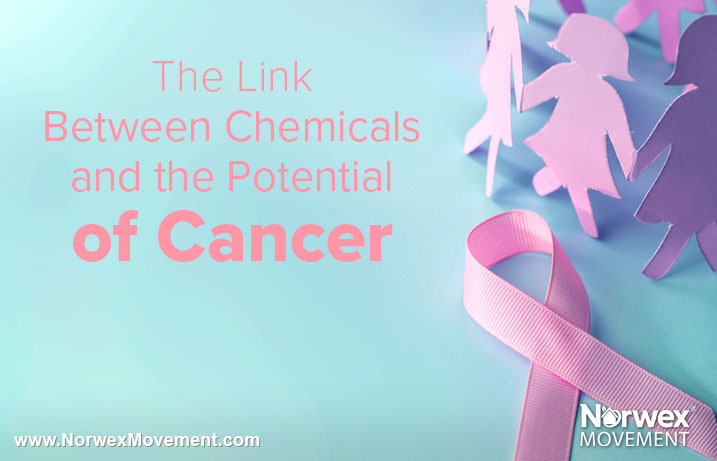

As the use of chemicals has risen in the U.S. and other industrialized countries, so have cancer rates. Today, it’s estimated that about 1 of every 8 women will develop breast cancer. That’s why it’s more important than ever to understand some of the causes and risk factors associated with this deadly disease.
Because October is Breast Cancer Awareness month, we wanted to share information about potential environmental causes—particularly household items that could potentially be linked to breast cancer.
Age, genetic factors, diet, obesity, alcohol consumption and exercise are all known factors for breast cancer. But there are also a number of potential factors stemming from the abundance of environmental chemicals. In fact, there are more than 85,000 synthetic chemicals on the market today, from preservatives in our lipstick and flame retardants in our sofas to plasticizers in our water bottles and pesticides on our fruits and vegetables.
Here are some other places they may be hiding:
Did you know that preservatives ending in “paraben” have been found in breast cancer tumors? Butylparaben, ethylparaben, isobutylparaben, methylparaben and propylparaben are all preservatives typically found in laundry products as well as personal care products. Parabens have been shown to mimic estrogen, and according to breastcancer.org, they “can penetrate the skin and act like a very weak estrogen in the body—potentially turning on the growth of hormone-receptor-positive breast cancers.”
What is worrisome is that while individual products may contain limited amounts of parabens within safe limits set by the U.S. Food & Drug Administration (FDA), cumulative exposure to the chemicals from several different products could be overloading our bodies and contributing to a wide range of health problems.
Look for personal care and laundry products that are free from parabens.
Plastic packaging and containers often contain phthalates, which can be used to soften plastic and make it easy to bend. In a 2012 study published in The Journal of the Federation of American Societies for Experimental Biology, phthalates were shown to cause cancer cells to multiply three times faster and spread about two-and-a-half times faster than cells that were not exposed to phthalates.
Unfortunately, phthalates can leach from food storage containers and/or plastic wraps into your food—especially if the food being stored is oily or has a high fat content. Because phthalates have been linked to hormone disruption, early puberty and breast cancer, any food packaged in plastic should be put in a glass container as soon as you get home. Phthalates release throughout the life of a product, so the sooner you can repackage it, the better. Microwaving? Always use a microwave-safe food or beverage container and never microwave plastic.
To help you reduce the amount of plastic in your home, try plastic-free cutting boards, use silicone lids instead of plastic wrap and stainless steel drinking straws instead of plastic ones.
In 2012, U.S. Centers for Disease Control and Prevention scientists found that girls exposed to high levels of dichlorobenzene, a solvent chemical used in solid toilet bowl deodorizers as well as moth balls and some air fresheners, were more likely to have their first period an average of seven months earlier than girls barely exposed to the common chemical. Early puberty is a major risk factor for developing breast cancer later in life.
Because early exposure to harmful chemicals can have the most potentially damaging effects, it’s important to keep babies and toddlers as protected as possible from them. Bisphenol-A, or BPA, is another pervasive chemical that is a risk factor for breast cancer. Found in a wide variety of products, including baby bottles, plastic foodware, tin food cans and some toys, BPA mimics estrogen and has been linked to early puberty among girls.
In addition to reducing the use of plastic, especially for food storage and heating, it’s important to dust your home often and keep floors and furniture as clean and chemical-free as possible. Chemicals often settle in dust and are tracked in from outdoors, so clean your floors often and avoid wearing shoes indoors to help you reduce chemicals like BPA in your home.
Resources:
Love this article. All the details are helpful to educate others.
Thank you for helping us share the importance of reducing toxic chemicals in everyday products.
YES! All of this! YES!
Thank u for the easy language and simple layouts of this article to reach the post people
People may put this down to scaremongering. Prevention article is good reference.
Thank you for this article. Such important information!
I’m glad to be part of this group.
Thank you, Monisols! We’re so glad you’re a part of our group too!